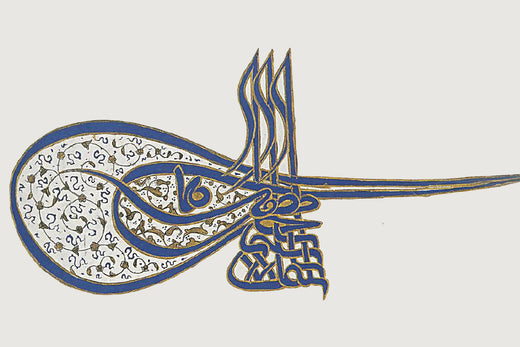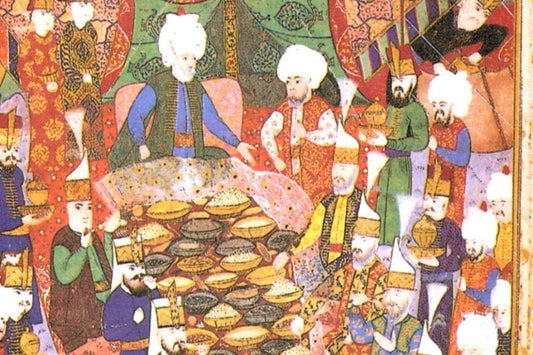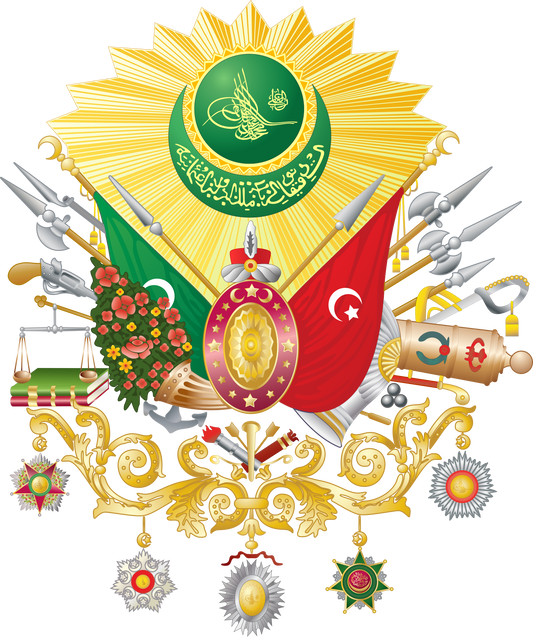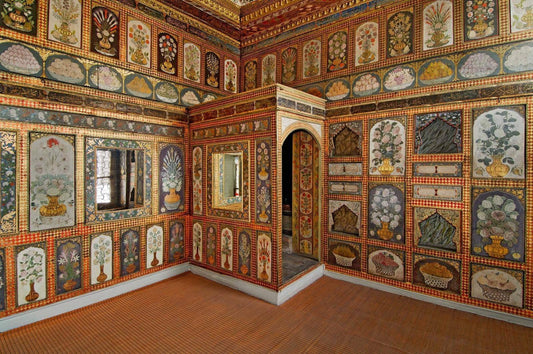The Helical Tuğrakeş Style holds a unique place in Ottoman ceramic art. Unlike the Golden Horn Work and the Baba Nakkaş Work, this style is based on an abstract design, devoid of any floral motifs or descriptive elements. Its distinctive feature is its long, continuous stems that emerge from a central point and form rings around it. The stems are decorated with small motifs placed at regular intervals; a rosette is followed by comma-shaped leaves branching to the right and left, which are in turn followed by small semicircular shapes. Thus, the static qualities of the rosettes contrast with the timid movements of the semicircles and commas; however, the subsidiary motifs do not obstruct the spiraling movements of the main stem.
Helezoni Tuğrakeş's Unique Design and Contribution to Abstract Art
The name "Helezoni Tuğrakeş Style" does not reflect that this style was not an independent creation of the tile artists. Helix-curved tendrils were popular in Islamic decoration in the late Middle Ages, and the rosettes, semicircles, and comma-shaped leaves on Ottoman ceramics bear a resemblance to those on the illuminated base of Suleiman the Magnificent's tughra. Therefore, the name "Golden Horn Work" is misleading, and it would be more accurate to call the ceramics "Helezoni Tuğrakeş Style" to emphasize their association with the palace.
Historical Origins of Spiral Folds in Ottoman Ceramics
The association of this style with a tughra adorning an undated charter may point to İbrahim Pasha, who served between 1523 and 1536. A second misleading aspect of the name "Golden Horn" regarding the origin of the tile is that, despite suggesting a manufacture in Istanbul, there is no concrete evidence to support this claim. The price registers and the works of Evliya Çelebi indicate that the Golden Horn ware was unglazed pottery.
The Place and Importance of the Spiral Tuğrakeş Style in Palace Art
The shapes and motifs of these ceramics are consistent with typical İznik shapes from 1525-50. The Italian-derived 'tondino' shape also appears in Ottoman tiles. Most of these ceramics have been found in İznik, indicating their production location.
Traces and Influence of the Spiral Tuğrakeş on İznik Tiles
The spiral tugrakesh style became widespread in the second quarter of the 16th century. Following the Ottoman conquest of Egypt, pieces in this style were found in Fustat. The style was also exported to Italy and from there spread to England. Ligurian ceramics, particularly those dating to 1572, appear to mimic Ottoman spiral branches.
The International Spread and Interaction of the Helical Tuğrakeş Style
The heyday of the Helezoni Tuğrakeş Style, which lasted from the 1520s to the 1550s, was conceptually conservative and reflective of the past. This style is semantically similar to the work of Baba Nakkaş, and curved branches play a prominent role in both ceramics. More importantly, these styles share an introverted and closed aesthetic. This aesthetic reflects the conservative tastes and aesthetics of the Ottoman court, illuminating the rich and diverse history of ceramic art.
The Aesthetic and Cultural Value of the Helezoni Tuğrakeş in Ottoman Ceramic Art
The Helezoni Tughrakeş Style represents a striking and original aspect of Ottoman ceramic art. By deviating from traditional motifs toward an abstract and innovative path, this style elevates artistic expression to a new dimension. The subtle harmonies and contradictions between rosettes, semicircles, and comma-shaped leaves reflect the aesthetic depth of this style and the craftsmen's mastery. Furthermore, the Helezoni Tughrakeş Style's association with the Ottoman palace and its historical context demonstrate the value of these ceramics not only visually but also culturally and historically. Therefore, the Helezoni Tughrakeş Style should be remembered as a visual and historical treasure within Ottoman art history.




